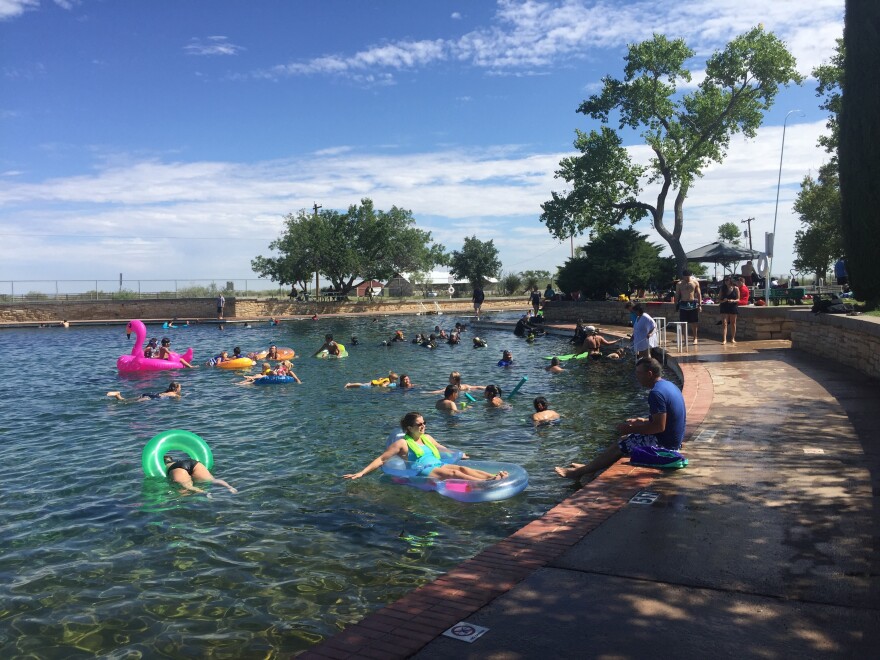By Mitch Borden
At the base of the Davis Mountains, in Southern Reeves County, the San Solomon Springs feed the famous Balmorhea State Park pool, but the springs’ output of water has been declining over the past century.
The drop — along with recent oil development around Balmorhea — has some concerned that the springs' future may be in danger. That's why researchers have begun to assess the area’s aquifers and other water sources to collect more information in an effort to help protect this treasured freshwater spring.
Since the 1920s, the amount of water flowing from the San Solomon Springs has decreased by nearly half, according to Brad Wolaver, a hydrologist from the University of Texas' Bureau of Economic Geology. At the Rio Grande/Rio Bravo Water Symposium held in Marfa last week, Wolaver presented information that showed the spring had gone from producing 45 cubic feet of water per second in 1920 to producing between 20-30 cubic feet per second in 2018.
He explained the possible reasons for this decrease include a lag in rainfall coupled with groundwater pumping for agricultural use and oil and gas production.
“If there is heavy pumping nearby there can be an effect on spring discharge,” said Wolaver.
Wolaver is working on an industry-backed project focusing on the water sources that replenish the San Solomon Springs near Balmorhea. His team is drilling wells and installing sensors to monitor underground aquifers, the surface water that feeds them, and some freshwater springs, including the San Solomon.
He hopes this data will help residents and oil companies better understand the movement of the region’s water and help develop "approaches to minimize potential adverse impacts of the springs so we have them flowing for generations to come.”
The next step in the project is to continue reaching out to landowners to expand the amount of data the team can collect.
This study is funded by the Apache Corporation, which is the largest oil and gas producer around Balmorhea.


